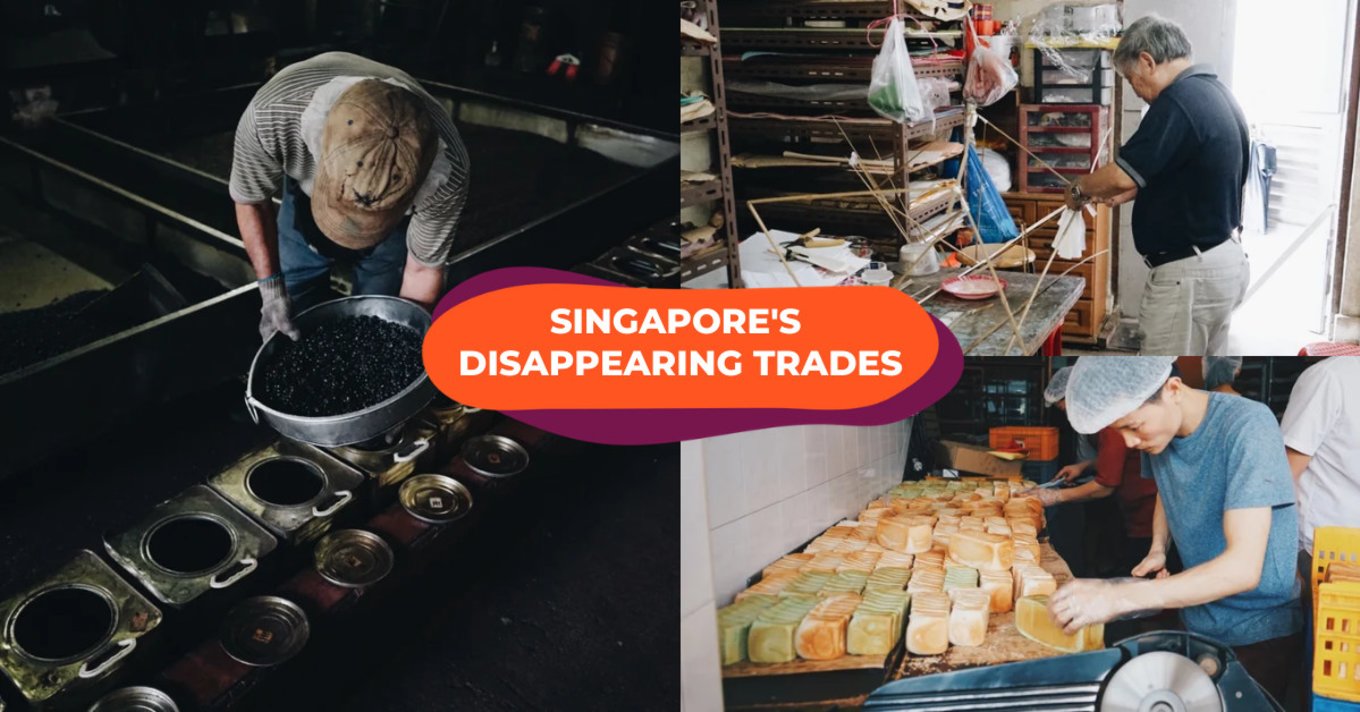Traditional Bakeries, Coffee Roasters and Paper House Making
#Throwback to the days where supermarkets didn’t exist and one had to travel to a local coffee roaster for beans, or a local bakery just to get your dough. While convenience has taken over as the way of life, sometimes it’s good to pause and think about where our sources come from.
If you think you know your Little Red Dot, you might want to think twice. These disappearing trades in Singapore are hidden gems right in our own backyard and it’s time to explore them!
Hello There! Are you new with us? 😉
Here's an exclusive gift for you! Enjoy 5% off your first app booking using the promo code <BETTERONAPP>. T&Cs apply.
A glimpse at the past
Hop into a time machine and take a glimpse at our past with Klook’s EXCLUSIVE disappearing trades tour. Let the guides bring you behind the scenes of the origins of the Kaya toast breakfast you have every morning and the Kopi you drink at noon.
The real stars of the tour are the people of the trade, Fire away and ask all your burning questions and they’ll be happy to give you all the nuggets of wisdom they have.
1. Traditional Coffee Roasters
Step into the industrial area of Depot Lane and it’s not hard to spot the Coffee Roasters. Just follow the scent of freshly roasted beans or spot the trail of smoke after a round of roasting.
Did you know that there are over 2000 Kopitiams in Singapore? Most of them get their beans from here! These Robusta beans are different from your Starbucks brews but trust us they’re equally good.
The beans are roasted at 180 degrees celsius for 25 minutes before sugar and a secret ingredient is added - margarine. Sometimes, corn is mixed in with the beans to increase the yield of the roast and we bet you won’t even be able to detect it.
The beans will need to be constantly moving so that they don’t burn and they are evenly roasted. You can even try your hand at raking the beans.
Once roasted, the beans are then packaged into tin cans and shipped off to the various coffeeshops island-wide. The next time you’re thinking of purchasing a bag of beans, why not #supportlocal?
2. Paper House Making
While it may be taboo to talk about death to some, for the craft masters at the paper house making establishment it has become a norm. These paper houses require many hours to construct and can cost up to $50K for a 50 ft house.
How many of you understand why people burn paper houses? The Chinese believe in the afterlife. Families often burn paper versions of daily necessities for their ancestors as they believe that this is a form of paying respect.
What you don’t see is the blood, sweat and tears of the paper house makers, creating a paper house from scratch. You start off with building the structure out of wooden sticks and tying it together with paper.
Upgrade your house with fully furnished kitchens, and insane entertainment system and of course a bathroom for your needs. Who says paper houses are only a thing of the past!
3. Traditional Bakery
If you needed to get a loaf of bread, where would you go? To the nearby supermarket, 7-11 stores or travel down to a local traditional bakery where it's made fresh daily? There used to be over 200 traditional bakeries around, now we are down to 5.
If only you could smell what we smelt, we bet that would be reason enough to head down. Go behind the scenes to see the making of the loaves and let the bakers tell you the 7 ingredients they use for bread.
Our favourite part of the tour - EATING! Feast on the fluffiest loaf of Pandan or Milk bread after a whole morning of walking. We had ours paired with Kaya and Peanut Butter Spread.
Other fading trades in Singapore
From Parrot readers to Lion Dance Head makers, these trades have slowly but surely faded into the background of our lives of convenience. While many of us prefer ordering our goods off Taobao, and rightfully so at a fraction of the price, those don’t come with a lifetime guarantee.



































